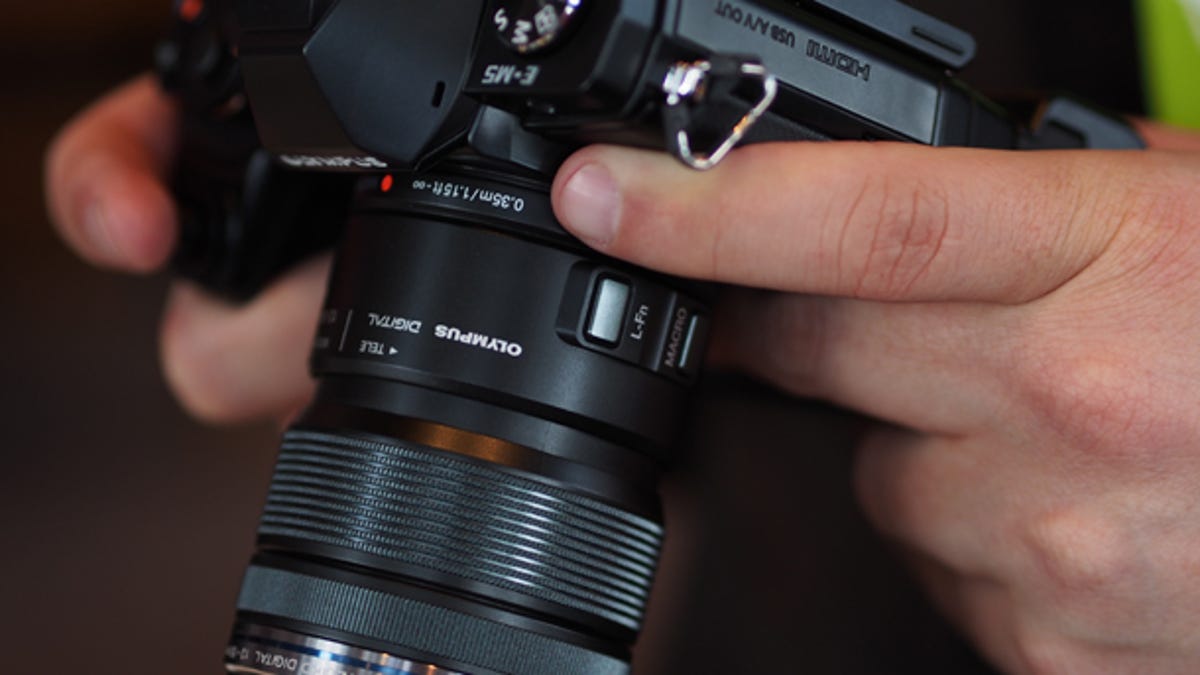Olympus' best shot yet: First days with the OM-D
On a jaunt to the snowy north, the OM-D E-M5 proves itself a fast, fun-to-shoot camera for the creative photographer.

Olympus invited a handful of reviewers out to Whistler, Canada, to pick up our evaluation units of the OM-D E-M5 and get some shooting in at the Olympus-sponsored Telus World Ski and Snowboard festival. (CNET paid my way.) I previewed the E-M5 when it was first announced, and for the most part thus far the camera lives up to -- and down to -- my expectations.
As I guessed, the camera is quite fast. It focuses and shoots quickly enough that I was comfortable foregoing prefocusing and took more impulse and experimental shots where I simply pointed the camera in a direction that seemed interesting and snapped without framing. The one aspect of performance I find irritating is the lagginess coming out of sleep mode. I frequently had to check to ensure the power was on as I waited for the camera to awaken. It's also a bit sluggish autoswitching between the LCD and the EVF, but that's common. Annoying, but common.
The burst shooting is also surprisingly robust, with an EVF that refreshes well enough for most continuous shooting (I haven't yet tested panning, though, which is the real trial.) With a fast SD card it can maintain a reasonable burst of raw+JPEG, which is pretty important since a lot of the high ISO (1,600-plus) action shots I took might be salvageable once I can process the raw files; the JPEGs are too messy. That's not a unique problem for this camera, as most camera noise-reduction algorithms tend to exacerbate artifacts in even slightly out-of-focus or motion-blurred areas.
There are no surprises in the autofocus system; that is, the center-spot AF works well, the face-detection AF is frequently helpful and occasionally gets in the way (there needs to be an instantaneous override when you don't want to focus on the people), the full-time AF is easily confused and pulses too often when shooting video, and the tracking autofocus seems like it's working at the time but in actuality lags the subject. All of this is pretty much par for the course in today's AF systems, however.
The no-surprises theme carries on through the image quality, at least as far as I can tell on a sub-par notebook display. That means ISO 200 JPEG shots look good, if a hair oversharpened, and that JPEG and noise-suppression mushiness tends to kick in at ISO 400. It does look like the algorithms are a bit smarter now, though, as at ISO 400 and 800 the sharp areas retain a relatively clean appearance. Metering, exposure and color look good, but all require further testing for consistency and display on a better monitor.
Overall, I enjoy shooting with the E-M5. Like the NEX-7, it's a good size -- neither too large nor too small -- and comfortable to grip, and all the lenses are small enough to stash in a roomy jacket pocket if necessary. The retro look deservedly attracted quite a bit of attention, and several accidental drops attested to the camera's sturdy build.
The EVF and tilting OLED touch-screen display are bright and usable, though the latter becomes nearly invisible in direct sunlight and I always find OLEDs too cool and contrasty for my taste. The buttons feel mushy and some of them are a little too small for easy access (like the function and review buttons), and there's no way to lock the front dial which adjusts exposure compensation -- with the inevitable consequences -- without changing its function entirely. And it's time for the company to overhaul its implementation of custom settings to bring it into parity with competitors to make them easier to use.
Those issues aside, I do enjoy shooting with the camera. We'll run it through our lab testing and I'll take it out for more fun in the sun (and the moon) before I deliver my final verdict. Stay tuned.

